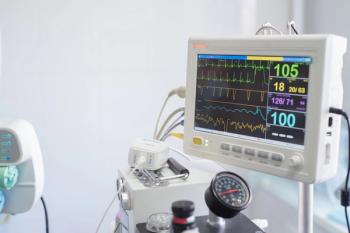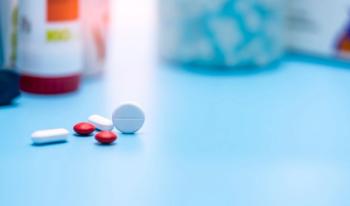
Finger Feeding
Finger feeding is a technique which allows you to feed the baby without giving the baby an artificial nipple. Finger feeding is also a method which helps train the baby to take the breast. If you want to breastfeed successfully, it is better to avoid the use of artificial nipples before your milk supply is well established.
Finger feeding is a technique which allows you to feed the baby
1. The baby refuses the breast for whatever reason, or if the baby is too sleepy at the breast to nurse well. It is also a very good way to wake up a sleepy baby.
2. The baby does not seem to be able to latch on to the breast properly, and thus does not get milk well. (If a lactation aid can be used at the breast, why use finger feeding?).
3. The baby is separated from the mother, for whatever reason. However, in such a situation, a cup is probably a better method of feeding the baby.
4.
5. Your nipples are so sore that you cannot put the baby to the breast. Finger feeding for several days may allow your nipples to heal without causing more problems by getting the baby used to an artificial nipple. Cup feeding is also more appropriate in this situation and takes less time. This is only a last resort. Proper positioning and a good latch help sore nipples far more frequently than finger feeding (Handout #3 Sore Nipples).
Finger feeding is much more similar to breastfeeding than bottle feeding is. In order to finger feed, the baby must keep his tongue down and forward over the gums, the mouth wide open (the larger the finger used, the better), and the jaw forward. Furthermore, the motion of the tongue and jaw is similar to what the baby does while feeding at the breast. Finger feeding is best used to prepare the baby to take the breast. Cup feeding is usually easier and faster when the mother is not present to feed the baby.
Please Note: If the baby is taking the breast, it is better by far to use the lactation at the breast, if supplementation is truly necessary (Handout #5 Using a Lactation Aid).
Finger Feeding (best learned by watching and doing)1. Wash your hands. It is better if the finger nail on the finger you will use has been cut short, but this is not necessary.
2. It is best to position yourself and the baby comfortably. The baby's head should be supported with one hand behind his shoulders and neck, the baby should be on your lap, half seated, and facing you. Any position which is comfortable, however, will do.
3. You will need a lactation aid, made up of a feeding tube (#5F, 36" long), and a feeding bottle with expressed breast milk
4. Line up the tube so that it sits on the soft part of your index (or other) finger. The end of the tube should line up no further than the end of your finger. It is easiest to grip the tube, about where it makes a gentle curve, between your thumb and middle finger and then position your index finger under the tube. If this is done properly, there is no need to tape the tube to your finger.
5. Using the finger with the tube, tickle the baby's lips lightly, until the baby opens up his mouth enough to allow your finger to enter. If the baby is very sleepy, but needs to be fed, the finger may be gently insinuated into his mouth. Generally, the baby will begin to suckle even if asleep, and receiving liquids will then awaken him.
6. Insert your finger with the tube so that the soft part of your finger remains upwards. Keep your finger as flat as possible. Usually the baby will begin sucking on the finger, and allow the finger to enter quite far. The baby will not usually gag on your finger even if it is in his mouth quite far, unless the baby is full or used to bottles.
7. Pull down the baby's chin, if his lower lip is sucked in.
8. The technique is working if the baby is drinking. If feeding is very slow, you may raise the bottle above the baby's head. Try to keep your finger straight, flattening the baby's tongue. Try not to point your finger up, but keep it flat, thus keeping down the baby's tongue, and working the lower jaw forward.
9. The use of finger feeding with a syringe to push milk into the baby's mouth, is, in my opinion, too difficult and definitely not more effective than simply using a bottle with the nipple hole enlarged and the tube coming from it.
If you are having trouble getting the baby to latch on to or to suckle at the breast, remember that a ravenous baby can make the going very difficult. Take the edge of his hunger by using the finger feeding technique for a minute or so. Once the baby has settled a little, and sucks well on your finger (usually only a minute or so), try offering the breast again. If you still encounter difficulty, do not be discouraged. Go back to finger feeding and try again later in the feed or next feeding. This technique usually works. Sometimes several days, or on occasion a week or more, of finger feeding are necessary, however.
If you are leaving the hospital finger feeding the baby, make an appointment with the clinic within a day or so of discharge. The earlier the better.
Once the baby is taking the breast, he may still require the lactation aid to supplement for a period of time. Although the baby may take the breast, the latch can still be less than ideal, and the suckle may still not be efficient enough to ensure adequate intake.
References:
About the Author:
JACK NEWMAN, MD, FRCPC is a pediatrician, a graduate of the University of Toronto medical school. He started the first hospital-based breastfeeding clinic in Canada in 1984. He has been a consultant with UNICEF for the Baby Friendly Hospital Initiative in Africa. Dr. Newman has practiced as a physician in Canada, New Zealand, and South Africa.
May be copied and distributed without further permission.
Newsletter
Get the latest clinical updates, case studies, and expert commentary in obstetric and gynecologic care. Sign up now to stay informed.
















